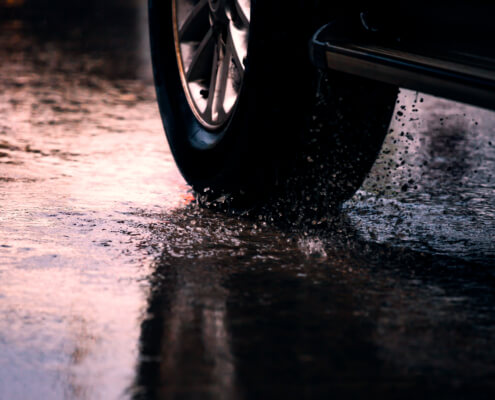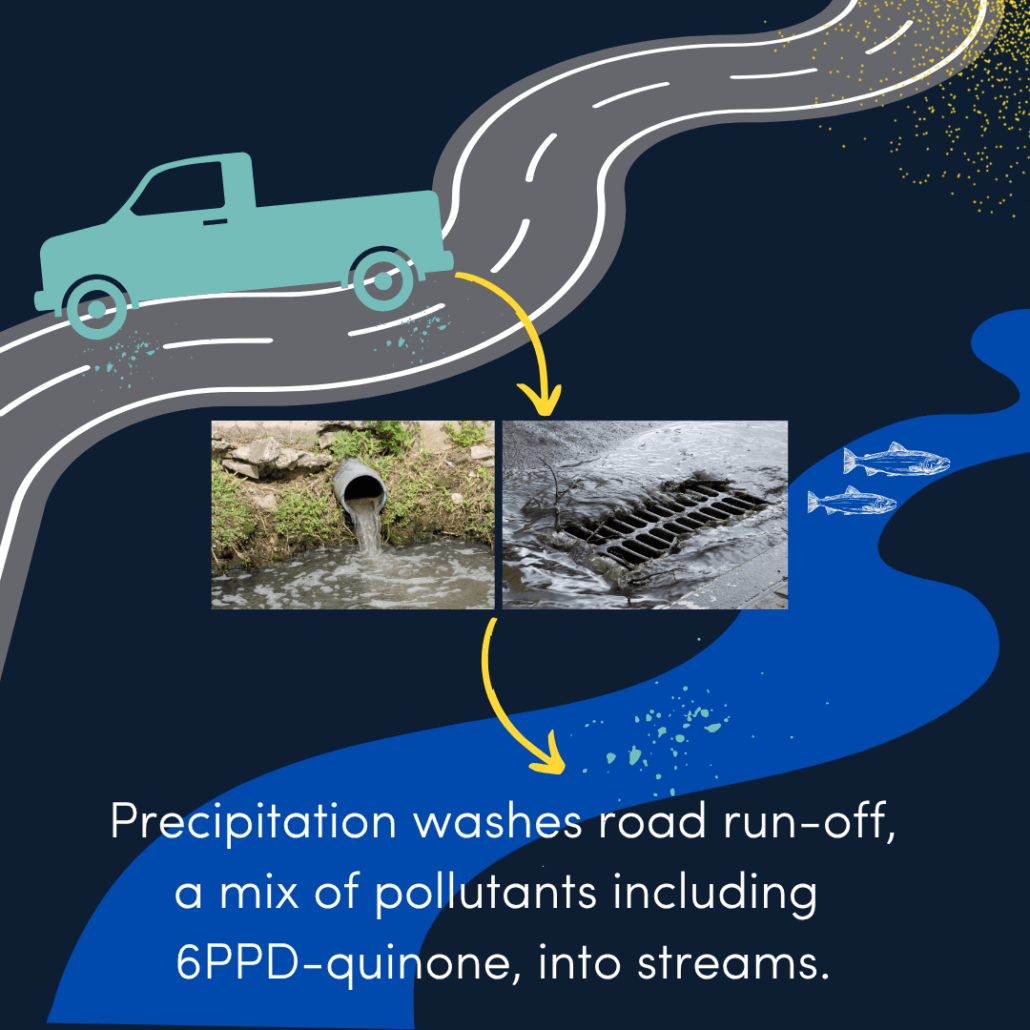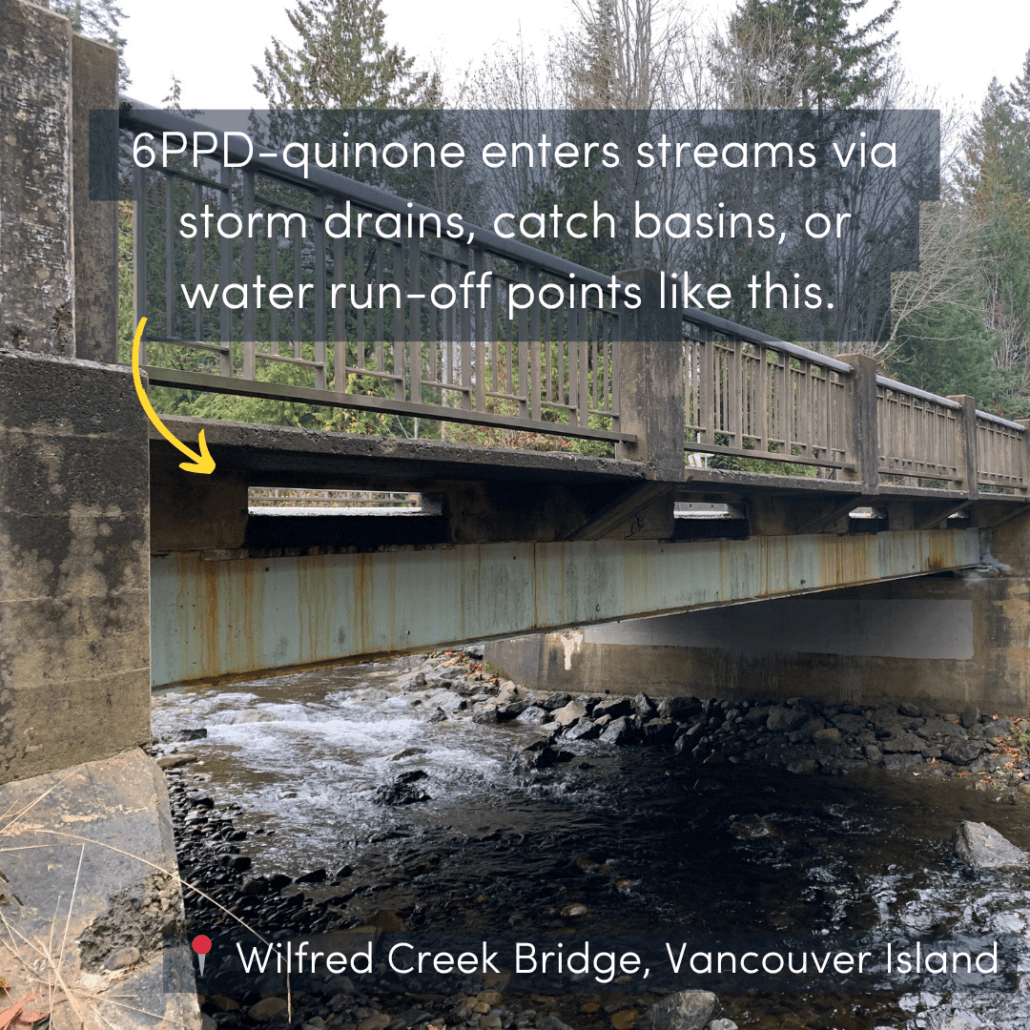 https://psf.ca/wp-content/uploads/2024/02/coho-salmon-juvenile-46-scaled.jpg
2560
2048
Braela Kwan
/wp-content/uploads/2022/04/PSF-Logo-2022-min.png
Braela Kwan2024-05-09 13:13:022025-02-05 16:32:45PSF applauds federal decision to assess chemical linked to coho deaths
https://psf.ca/wp-content/uploads/2024/02/coho-salmon-juvenile-46-scaled.jpg
2560
2048
Braela Kwan
/wp-content/uploads/2022/04/PSF-Logo-2022-min.png
Braela Kwan2024-05-09 13:13:022025-02-05 16:32:45PSF applauds federal decision to assess chemical linked to coho deathsSummary
6PPD is a chemical and antiozonant used to prolong the lifespan of tires by preventing the degradation of rubber. When this chemical reacts with (ground level) ozone in the air, it forms 6PPD-quinone (6PPD-Q), a toxic compound. Through typical use, tires wear down and particles are released into the surrounding environment, mixing with stormwater that enters urban streams through road runoff. 6PPD-Q was recently found to be a lethal substance to coho salmon, and research is underway to understand the full extent of this toxin’s effect in these urban environments. PSF raises awareness of this issue at all levels and supports local research and monitoring efforts.

Graphic: Carmen Bright/Pacific Salmon Foundation
What we’re doing
- Supporting monitoring: funding BC Conservation Foundation to coordinate a community monitoring network on eastern Vancouver Island (2022-24)
- Funding innovative technology and research capacity: contributing to the purchase of VIU Applied Environmental Research Lab mass spectrometer
- Supporting mitigation solutions: PSF’s Community Salmon Program funds rain gardens and road run-off mitigation efforts
- Developing guidelines and best practices for mitigation: Stormwater management report and recommendations for municipalities (PSF’s Marine Science Program)
- Convening experts and knowledge sharing: supported and helped organize the first workshop on 6PPD-Q and salmon at VIU in April 2024 (watch the keynote presentations)
- Raising awareness and regulatory engagement: Formal request was sent to Environment And Climate Change Canada under the Canadian Environmental Protection Act to prioritize 6PPD for assessment. As a result, 6PPD was placed on the priority list for assessment.
Monitoring 6PPD-Q in urban salmon-bearing streams
Watch this video to hear Haley Tomlin (BC Conservation Foundation) and Erik Krogh (Vancouver Island University) discuss their joint efforts to monitor 6PPD-Q in urban streams on the East Coast of Vancouver Island using an innovative rapid detection method, supported by PSF.
Workshops
Tire Wear Toxin Workshops: May 8 – 9, 2025 & April 29 – 30 2024.
(Hosted in Nanaimo at VIU, funded in part by PSF)
- Summary: 2024 Workshop Summary Report (pdf)
- Video Playlist: Presentations from the 2024 and 2025 workshops
A third and final workshop will take place in February 2026. This page will be updated with details soon.
Fast facts
- Coho salmon living in small urban streams near heavy traffic corridors are the most impacted by 6PPD-Q.
- 6PPD-Q builds up on roads during dry weather and is flushed into streams with rain, causing high concentrations in some urban streams during rainfall events.
- There can be many toxic substances in road run-off including 6PPD-Q, and green infrastructure such as rain gardens can be used to filter the water before it enters salmon streams to improve water quality.
- Salmon and related fish species have very different sensitivities to 6PPD-Q. Coho are sensitive even to low concentrations, but Chinook salmon and rainbow trout are also susceptible to its toxic effects at high concentrations. Sockeye, chum, and pink salmon do not appear to be impacted.
- 6PPD is a rubber preservative that has been added to tires since the 1970s to prevent tires from cracking, as a safety measure and to make tires last longer. 6PPD reacts with ozone in the air to form 6PPD-Q in tire wear particles that are shed from tires through normal use.
Other Resources
6PPD-Q Introduction and Background by Ed Kolodziej, first presenter at the 2024 Workshop:
PSF signs petition on tire toxin 6PPD-quinone:
You can learn more about 6PPD-Q here:
Stories and news
 https://psf.ca/wp-content/uploads/2024/02/coho-salmon-juvenile-46-scaled.jpg
2560
2048
Braela Kwan
/wp-content/uploads/2022/04/PSF-Logo-2022-min.png
Braela Kwan2024-05-09 13:13:022025-02-05 16:32:45PSF applauds federal decision to assess chemical linked to coho deaths
https://psf.ca/wp-content/uploads/2024/02/coho-salmon-juvenile-46-scaled.jpg
2560
2048
Braela Kwan
/wp-content/uploads/2022/04/PSF-Logo-2022-min.png
Braela Kwan2024-05-09 13:13:022025-02-05 16:32:45PSF applauds federal decision to assess chemical linked to coho deaths
PSF requests Canada to investigate tire toxin impacting salmon
6PPD, Blog, PressThe Pacific Salmon Foundation (PSF) has been supporting local, British Columbia-based research related to 6PPD and its impact on salmon in their freshwater habitats for the past few years.

What’s killing coho?
6PPD, Blog, Salmon StewardB.C. researchers study urban pollution washing into local creeks and the impacts on Pacific salmon.
This story originally appeared in the Fall 2023 edition of Salmon Steward, the Pacific Salmon Foundation's quarterly print magazine.
When…



